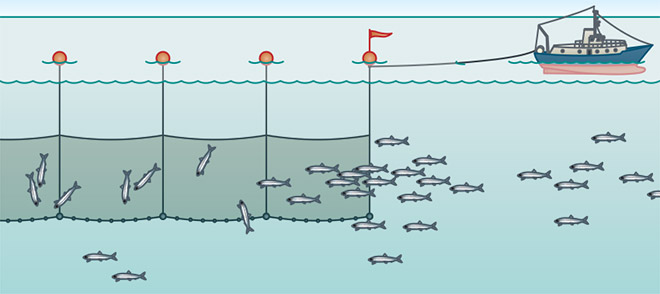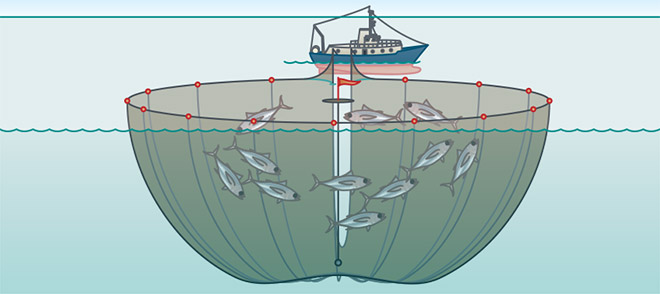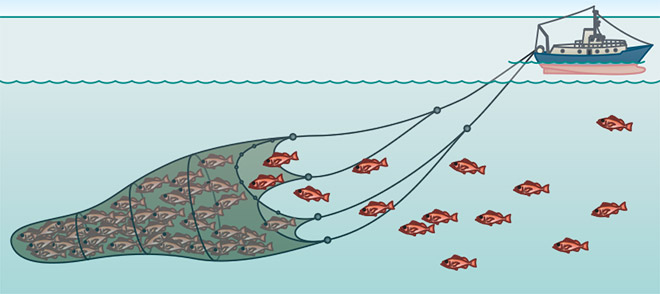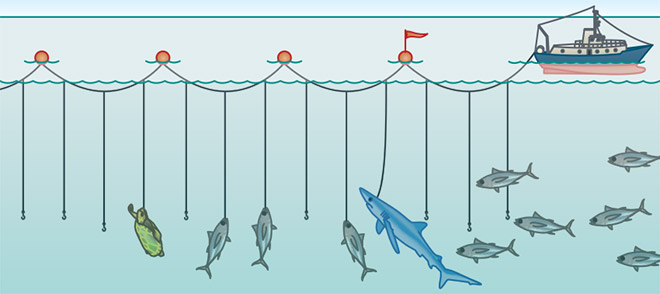Different fishing techniques and their impacts on the environment
5.13 > Different fishing techniques and their impacts on the environment

GILLNETS are anchored at a fixed position in the water. There is a low level of bycatch of other species because of the specific sites selected for the setting of gillnets. However, turtles, marine mammals and seabirds can become entangled in these nets. © maribus

PURSE SEINE NETS are used to encircle a school of fish. The net is then drawn together to retain the fish by using a line at the bottom, allowing the net to be closed like a purse. There is a low level of bycatch of other species as purse seines target schools of one species. However, dolphins or turtles are often caught as bycatch. Modern purse seines therefore have escape mechanisms. © maribus

PELAGIC TRAWLS are funnel-shaped nets that are towed by one or two vessels. The fish are scooped up and captured in the “cod end”, i.e. the trailing end of the net. Bycatch of other species can be a problem in some areas, depending which species is being targeted for trawling. © maribus

BOTTOM TRAWLS work in a similar way to the pelagic trawl, but are dragged along the seabed. They are one of the most important techniques used in deep-sea fishing. The nets can damage underwater habitats such as cold-water coral reefs. © maribus

BEAM TRAWLS are bag-shaped bottom trawls that are mount-ed on a heavy metal beam and towed along the seabed. This destroys many fauna living in and on the seabed © maribus

LONG-LINES consist of a long main line, up to 100 km in length, with a large number of short lines (called snoods) carrying thousands of baited hooks. Bycatch is a problem. Dolphins, sharks, turtles and seabirds become trapped on the hooks © maribus